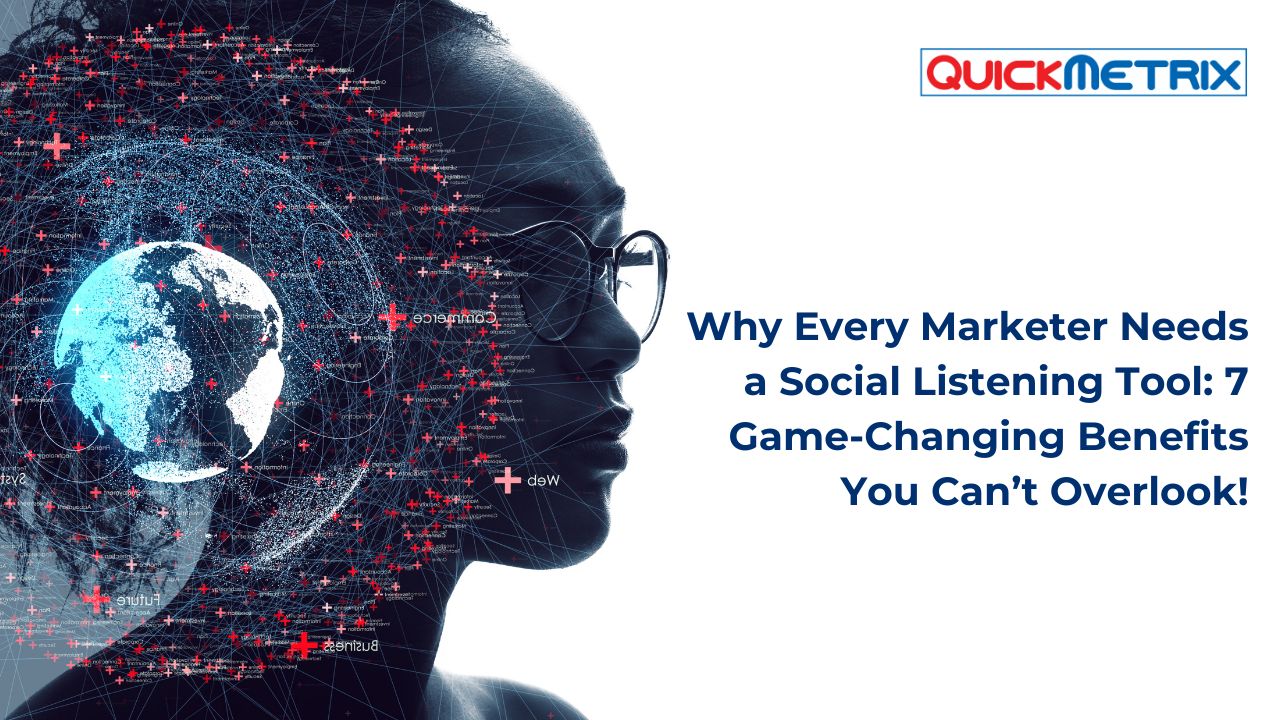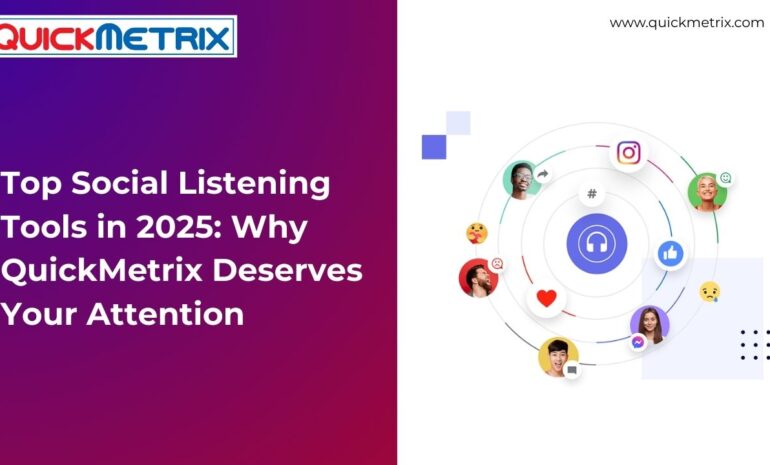Introduction to Social Listening tools
A. Definition of Social Listening
Social listening refers to the process of monitoring digital conversations about a brand, industry, or topic. It’s about tuning in to what people are saying online—not just about your brand, but also about competitors and relevant industry trends. Unlike traditional social media monitoring, which typically focuses on tracking mentions and engagement metrics, social listening digs deeper into sentiment, themes, and overall perceptions.
In today’s marketing landscape, understanding customer sentiment is crucial. As consumers continue to seek genuine engagement and meaningful connections with brands, social listening helps marketers stay ahead of the game by providing insights that can drive strategy and enhance customer relationships.
B. Evolution of Social Media
The rise of social media has transformed how businesses connect with their audience. Starting from simple platforms like Friendster and MySpace, we now have a plethora of social networks where users generate content and share experiences. This shift has moved marketing from a one-way communication style—where brands broadcast messages—to a two-way conversation that encourages genuine engagement.
As user-generated content became prevalent, brands not only needed to listen to feedback but also respond in real-time to maintain customer trust and loyalty.
C. Purpose of Social Listening Tools
Social listening tools are software solutions designed to help marketers track, analyze, and respond to online conversations. They offer a range of functionalities, including sentiment analysis, tracking brand mentions, and benchmarking against competitors. The ultimate goal of these tools is to help marketers understand their audience better, improve engagement, and drive strategic decision-making.
II. Benefit 1: Understanding Customer Sentiment
A. Analyzing Customer Feedback
Collecting and analyzing feedback is essential for understanding customer opinions. Social listening tools enable marketers to gather insights from various channels to see how customers feel about their brand. Using sentiment-analysis tools can help distinguish whether the feedback is positive, negative, or neutral, which in turn can influence marketing strategies.
It’s vital to consider both qualitative (in-depth opinions) and quantitative (numerical ratings) feedback. For instance, a product with a 4-star rating might seem good, but reading individual reviews can reveal valuable insights!
B. Identifying Brand Perception
Tracking brand mentions and discussions across platforms helps marketers understand how customers perceive their brand. By analyzing conversations, brands can gauge emotions and sentiments towards them. For example, companies that frequently engage in monitoring can identify significant perceptions shifts—perhaps positive feedback surrounding a new campaign may indicate its success, while negative comments may prompt a strategy reassessment.
C. Adapting Marketing Strategies
When brands tap into customer sentiment, they can make necessary adjustments to their marketing strategies. For instance, real-time responsiveness allowed a fashion brand to modify its messaging based on a sudden wave of negative feedback about its sizing. This adaptability can lead to improved customer satisfaction and loyalty, showcasing the power of understanding sentiment.
III. Benefit 2: Enhancing Customer Engagement
A. Real-Time Interaction
Today’s consumers expect timely responses to their inquiries. Social listening makes it easier for brands to identify opportunities for interaction. For instance, if a customer tweets a question about your product, responding promptly can demonstrate attentiveness and care.
Creating effective responses often involves understanding the differences in tone and approach for various platforms. By leveraging insights gained from social listening, brands can make interactions feel more personal and meaningful.
B. Creating Relevant Content
Social listening doesn’t just stop at customer engagement; it also informs content creation. By monitoring trending topics and customer interests, marketers can craft content that resonates with their audience. A well-known beverage company, for example, successfully tapped into health trends to launch a series of posts highlighting healthy drink recipes, resulting in boosted engagement and customer interest.
Building Community
Fostering a community takes time and effort. Utilizing social listening helps brands engage their audience and keep the conversation flowing. Whether through user-generated content campaigns or interactive social media posts, brands can measure community sentiment to refine their approach continually.
Benefit 3: Competitor Insights
A. Monitoring Competitors’ Online Activity
Social listening tools can track competitors’ mentions and marketing campaigns, helping marketers understand their strengths and weaknesses. By using engagement metrics, brands can do a side-by-side comparison and gain valuable insights that inform their own strategies.
B. Identifying Market Trends
Keeping an eye on competitors also allows brands to observe industry developments. A tool that tracks conversations can help spot emerging trends—be it a new product feature that consumers are raving about or a particular social issue that’s gaining traction. Recognizing these shifts early ensures that your brand remains relevant and competitive.
C. Strategic Benchmarking
Using insights from competitor analyses, brands can set performance benchmarks. Learning from what worked (or didn’t work) for rivals can inform campaigns and marketing strategies, enabling brands to focus their energy where it matters most.
V. Benefit 4: Crisis Management
A. Early Warning System
Social listening acts as an early warning system for potential crises. By continuously monitoring online conversations, brands can identify threats to their reputation before they escalate. For example, if a video goes viral for all the wrong reasons, social listening can alert marketers to address it swiftly.
B. Managing Brand Reputation
When negative feedback arises, transparency is crucial. Having a strategy in place based on insights from social listening can help brands respond effectively. Engaging with customers who have voiced concerns, while being open about addressing issues, fosters trust.
C. Restoring Trust Post-Crisis
Building back a brand’s reputation after a crisis requires commitment and empathy. Best practices involve engaging through meaningful conversations and demonstrating genuine efforts for improvement. Case studies of brands that successfully navigated turbulent times often highlight the importance of sincerity and action.
VI. Benefit 5: Driving Strategic Decision-Making
A. Informing Product Development
Customer feedback collected through social listening provides deep insights into preferences and needs—vital elements for product development. Companies like LEGO successfully developed new sets based on input from their community, leading to impressive sales figures and customer satisfaction.
B. Enhancing Marketing Campaigns
Refining marketing messages based on gathered insights can lead to more effective campaigns. Understanding your audience’s needs allows for better targeting and segmentation, ensuring that marketing efforts resonate deeply with consumers. Using social listening data to measure campaign effectiveness post-launch is essential for continuous improvement.
C. Aligning Business Objectives
Social listening tools can ensure that marketing efforts align with broader business goals. By embedding data-driven decision-making into your organization’s culture, you can adjust strategies based on real market insights, leading to enhanced performance and success.
VII. Benefit 6: Improving Brand Loyalty
A. Creating Personalized Experiences
Tailoring interactions to customer preferences can significantly enhance brand loyalty. Simple techniques, like addressing customers by name in responses or recognizing their previous interactions, can make a substantial difference. Many brands shine in personalization, showcasing genuine recognition of customer preferences.
B. Strengthening Customer Relationships
Ongoing conversation and engagement strategies foster long-term relationships and loyalty. Maintaining a commitment to listening to customers’ feedback helps to build trust, which is paramount for any brand looking to encourage repeat business.
C. Celebrating Customers
Recognizing and celebrating loyal customers reinforces their connection to your brand. Small gestures during significant customer milestones, like anniversaries or birthdays, can lead to delightful experiences that strengthen brand-love. Successful brands find innovative ways to appreciate and celebrate their customers publicly.
VIII. Conclusion
Social listening is not just an option—it’s a necessity for marketers today. From understanding customer sentiment and enhancing engagement to driving strategic decision-making, the benefits are clear. Investing in social listening tools means prioritizing audience insights, which can lead to meaningful improvements in marketing practices and customer relationships.
IX. Frequently Asked Questions (FAQs)
A. What are the key features to look for in a social listening tool?
Look for features like sentiment analysis, real-time monitoring, competitor tracking, and customizable reporting.
B. How do I start implementing a social listening tool in my business?
Begin by selecting a tool that aligns with your objectives, familiarize your team through training, and establish a regular process for analyzing data and taking action on insights.
C. Can social listening tools help with B2B marketing?
Absolutely! Social listening can provide valuable insights into industry trends, client needs, and competitor activities, all of which are beneficial for B2B marketing.
D. What are some popular social listening tools available today?
Some widely used options include Brandwatch, Hootsuite Insights, Sprout Social, and Mention.
E. How do I measure the success of social listening initiatives?
Success can be measured through improvements in customer engagement metrics, increased brand sentiment, adjustments made based on insights, or even changes in sales performance.



